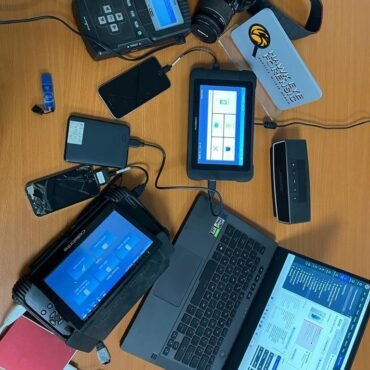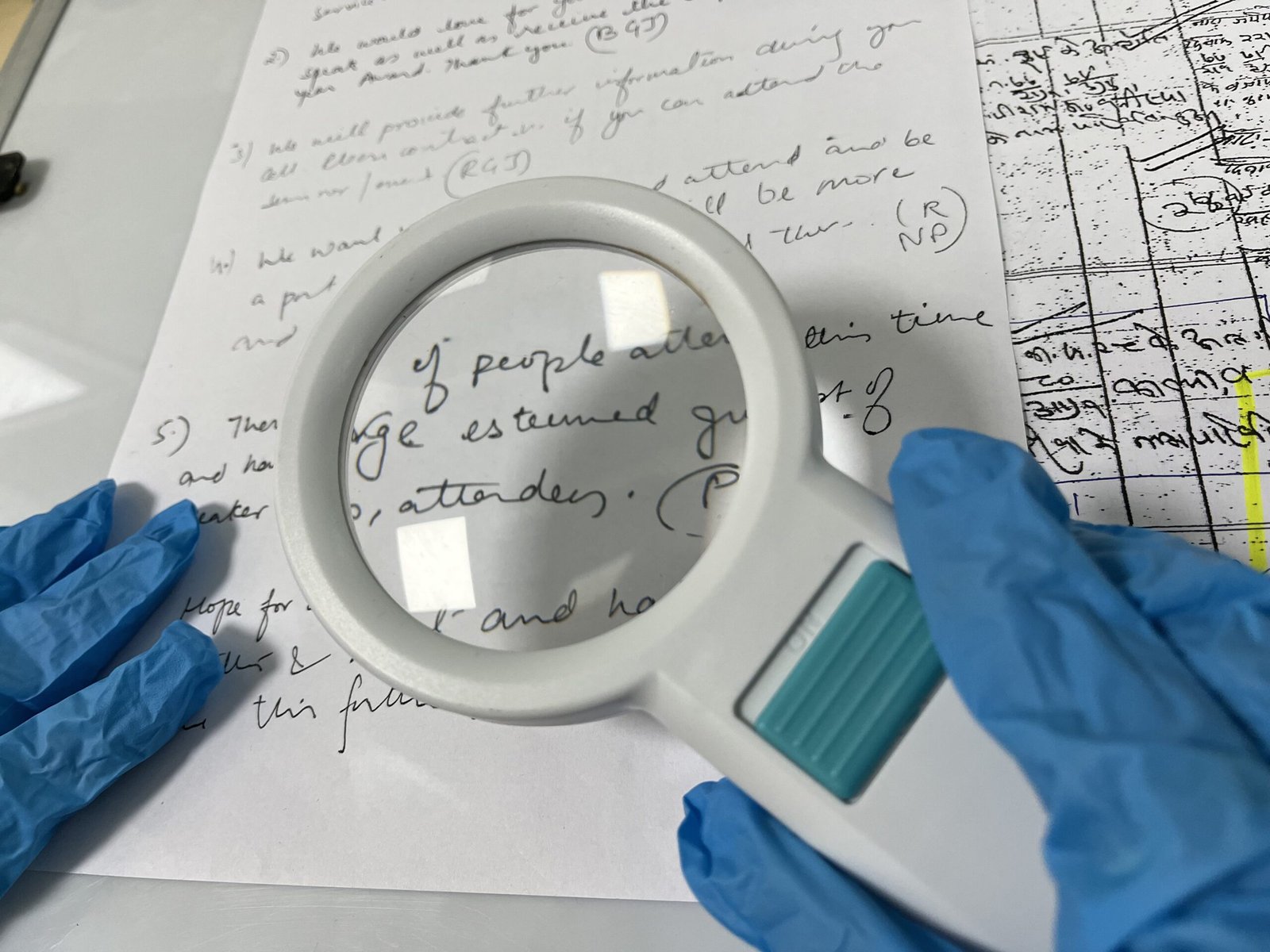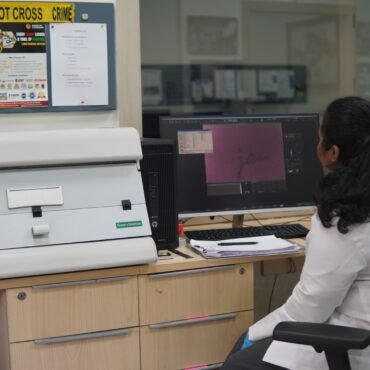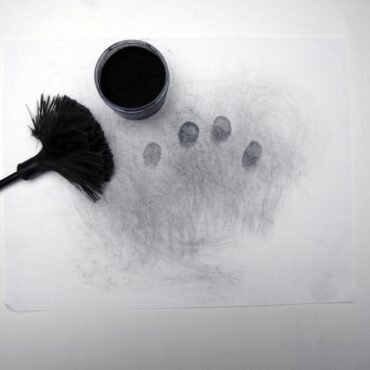INTRODUCTION
Handwriting analysis is important in forensic science because it helps to authenticate documents, identify individuals, and solve difficult legal issues. Forensic handwriting experts are specially trained individuals who examine handwriting, signatures, and writing patterns to detect forgery, authorship, and document tampering. Their competence bridges the gap between law and science, rendering them indispensable in legal and investigative proceedings.
DEFINITION
A Forensic Handwriting Expert (also known as a forensic document examiner or questioned document examiner) is an individual with specialized knowledge in analysing handwriting and questioned documents to determine authenticity, identify potential forgeries, or assess similarities and differences between writing samples, detect alterations, additions, or erasures in documents. They provide expert opinions and testimony based on their analysis, often assisting law enforcement in investigations or providing evidence in legal proceedings.
HANDWRITING EXAMINATION
A forensic handwriting comparison is more sophisticated than many other pattern-based forensic disciplines. Handwriting is a learnt neuromuscular action, hence the FDE must account for more intrasubject variation than disciplines based on physical traits (such as fingerprints).
Handwriting is not static and can be influenced by a variety of elements, including the writer’s graphic maturity, the environment in which one writes, the substrate, the writing instrument, the writer’s emotional, physical, and/or mental state, medicine, and others. Writers can also consciously choose to change the style (cursive, hand printing, mixed), size, and/or slant of their handwriting.
Despite this variation, mature writers generally demonstrate a clear and distinct pattern of characteristics that can be utilized to differentiate handwriting between individuals.
 METHOD:
METHOD:
(ACE-V): Analysis, Comparison, Evaluation, and Verification
- Analysis Phase: Each questioned and standard writing sample is evaluated independently using proper lighting and magnification to determine if it is original, freely prepared, and has sufficient quantity and quality of characteristics to be deemed suitable for
- Comparison Phase: The side-by-side comparison involves assessing the comparability of questioned and standard writings, documenting class and individual characteristics in the questioned writing, and determining if these characteristics are also present in the standard writing samples.
- Evaluation Phase: The forensic examiner evaluates similarities, differences, and limitations to determine the appropriate conclusion.
- Verification Phase: Involves repeating the ACE mechanism by a different handwriting examiner. A technical “peer review,” which improves the scientific rigor and robustness of the initial expert’s findings as well as the entire report.
IMPORTANT IN HANDWRITING EXAMINATION
- Authentication of legal documents: Helps validate wills, contracts, cheques, affidavits, property disputes and deeds.
- Criminal investigation: Links suspects through anonymous letters, ransom notes, or threatening messages.
- Fraud Detection: Identifies forged signatures in financial and corporate fraud cases.
- Civil & Family Disputes: Resolves issues involving disputed wills, property documents, and family settlements
- Courtroom Testimony: Provides expert opinion in court, supporting justice through scientific examination
Cases Encountered in Questioned Document Examination:
|
Case Type
|
Example Documents Involved
|
|
Forgery
|
Cheques, contracts, signatures
|
|
Alterations & Erasures
|
Legal agreements, invoices, affidavits
|
|
Property/Will Disputes
|
Wills, deeds
|
|
Financial Fraud
|
Bank forms, receipts, statements
|
|
Anonymous Communication
|
Threat letters, ransom notes
|
|
Stamped/Typed Document Issues
|
Stamped contracts, typed letters
|
|
Age & Sequence Analysis
|
Multi-page documents with additions
|
|
Signature/Handwriting Verification
|
All types
|
|
Academic/Employment Fraud
|
Certificates, appointment letters
|
|
Insurance & Loan Fraud
|
Claim forms, loan papers
|
|
Counterfeiting (Doc-related)
|
ID cards, currency, licenses
|
TOOLS AND TECHNIQUES USED
Some of the instruments used for the examination of documents are:
- Stereomicroscope: It is used to examine inks, colors, erasures, interlineations, and overwriting, as well as pen pressure, pause, and retracing when handwriting and signatures are examined.
- Comparison microscope: Forensic examiners can use a comparison microscope to visually compare two specimens side by side.
- Magnifying lens: Document examiners employ various magnification devices. Handheld magnifiers play an important part in forensic document inspection since they provide magnification strengths ranging from 2x to 10x.
- Infrared and UV light sources: Used to reveal hidden features in documents that may not be visible under normal lighting conditions. To detect changes, variances in ink composition, or features like watermarks and security elements.
- Transmitted light sources: This method includes shining light through a paper and studying the transmitted light to reveal details not visible under normal viewing conditions.
- Oblique Lighting: Angled or oblique lighting is employed to cast shadows on the surface of a document, to highlight imperfections, indentations, or modifications.
- VSC (Video Spectral Comparator): Analyzes documents using different light spectrums (UV, visible, and infrared) to identify hidden features.
- ESDA ( Electrostatic detection Apparatus): Detects indentations or impressions left on a documents by a writing instrument, even when the writing is not visible.
- Computerized/digital image analysis: Computerized image analysis is a powerful tool for forensic document examination, using algorithms and computational approaches to analyze visual data.
CONCLUSION
Forensic handwriting experts play an important part in modern investigative studies. Their capacity to scientifically evaluate handwritten materials aids in the detection of fraud, the prevention of injustice, and the assistance of law enforcement in critical situations. Whether it’s a forged signature on a cheque or a disputed will, the expertise of a handwriting analyst is often the deciding factor in the pursuit of truth and justice.



 METHOD:
METHOD:

Post comments (0)